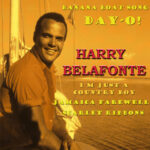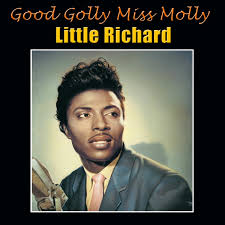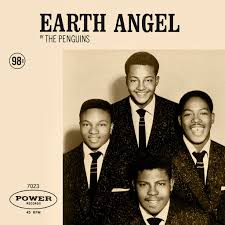 There are songs that get stuck in your head, and then there are songs that feel like they’ve lived there forever — woven into the collective DNA of music, memory, and late-night singalongs. “Banana Boat (Day-O)” by Harry Belafonte, released in 1956, is one of those songs. It’s the sound of the tropics meeting the mainstream, of humor laced with history, and of rhythm carrying the weight of labor — all while making you want to sway, smile, and shout “Daylight come and me wan’ go home!”
There are songs that get stuck in your head, and then there are songs that feel like they’ve lived there forever — woven into the collective DNA of music, memory, and late-night singalongs. “Banana Boat (Day-O)” by Harry Belafonte, released in 1956, is one of those songs. It’s the sound of the tropics meeting the mainstream, of humor laced with history, and of rhythm carrying the weight of labor — all while making you want to sway, smile, and shout “Daylight come and me wan’ go home!”
“Banana Boat” isn’t just a calypso classic — it’s a cultural phenomenon. It’s a song that somehow bridges colonial work chants, post-war pop, and the soundtrack to countless parties, cartoons, and movies. And it’s all held together by one man’s unmistakable voice — that golden, commanding baritone of Harry Belafonte, who turned Caribbean folk tradition into an international movement.
But to understand why “Day-O” endures, you have to hear it the way Belafonte wanted it heard — not just as a catchy tune, but as a slice of lived experience wrapped in joy, humor, and resilience.
The Roots Beneath the Rhythm
Long before Harry Belafonte sang it on American stages, “Banana Boat” existed in the Caribbean as a Jamaican work song. Dockworkers — mostly men unloading banana boats through the night — would sing to keep time, stay awake, and keep spirits up as they lifted heavy bunches of fruit onto ships. The original chant called out the worker’s exhaustion and anticipation for the sunrise: “Daylight come and me wan’ go home.”
It was a song about endurance — an anthem for men whose labor was invisible, whose hours were long, and whose voices rarely reached beyond the docks.
What Belafonte did in 1956 was revolutionary. He didn’t steal or soften the song; he reframed it for a new audience without stripping away its authenticity. On his album Calypso, the first LP ever to sell over one million copies, “Banana Boat” wasn’t just entertainment — it was education through rhythm. He brought the Caribbean’s stories and sounds to the center of American pop culture and made the world dance to the beat of history.
1956: When Calypso Took Over America
To understand how seismic “Banana Boat” was in 1956, you have to picture the music landscape. Rock and roll was still in its adolescence, jazz was experimenting with bebop and cool, and folk music hadn’t yet taken its big protest turn. Then came this voice — smooth as molasses and powerful enough to stop you mid-step — singing about bananas, tallymen, and the weary joy of working through the night.
It sounded like nothing else on American radio.
The instrumentation was simple but hypnotic: the light percussion of bongos and maracas, the lilt of acoustic guitars, and that unmistakable call-and-response structure. It was playful and communal — a format where the audience became part of the performance.
Belafonte’s version wasn’t just catchy; it was cultural diplomacy. It introduced calypso — a genre rooted in Trinidadian storytelling and social commentary — to a country that barely knew what steel drums were. Suddenly, Americans were trying to sing along phonetically to a Jamaican accent, clapping on beats they didn’t know existed.
And they loved it.
“Day-O” was everywhere — radio, TV, school choirs, cocktail parties. It was the sound of America’s mid-century optimism, dressed up in tropical flavor. And yet, beneath the smiles and singalongs, there was real history — the echo of colonial economies and the voices of laborers calling for daylight. Belafonte managed to carry both the joy and the pain in his voice, letting the song’s true meaning peek through the party.
The Magic of Belafonte’s Voice
Harry Belafonte didn’t just sing songs; he commanded them.
There’s a reason “Banana Boat” became his signature. His voice has this incredible elasticity — warm and welcoming one second, then thunderous and full of authority the next. When he sings the opening line, “Day-o! Day-ay-ay-o!” it’s not just a melody — it’s a call that reverberates. It’s the sound of dawn, the sound of exhaustion, and the sound of humor all at once.
Then comes the playful exchange:
“Come, Mister Tally Man, tally me banana.”
“Daylight come and me wan’ go home.”
It’s funny, but it’s also deeply rhythmic, a call-and-response that mimics the banter of workers on the docks. Belafonte’s delivery gives both roles personality — the tired worker and the tallyman counting crates under dim lantern light. You can practically see the sweat, hear the sea, and feel the sunrise.
What’s fascinating about his version is how it dances between tones. It’s joyful but weary, cheeky but profound. Belafonte never lets it become a novelty tune; he performs it with a kind of reverence — like he knows he’s carrying something sacred through the spotlight.
More Than a Song: A Trojan Horse of Culture
“Banana Boat (Day-O)” did something extraordinary: it smuggled Black Caribbean identity into the white American mainstream. In the racially segregated America of the 1950s, Belafonte — a man of Jamaican descent born in Harlem — managed to become a household name without bending to stereotypes.
Through “Day-O,” he brought the Caribbean’s storytelling tradition to the center stage — a tradition built on rhythm, humor, and coded resistance. Calypso music had long been used as social commentary, mocking colonizers and local politicians alike, cloaked in metaphor and wit.
Belafonte, who was deeply involved in civil rights activism alongside Dr. Martin Luther King Jr., understood the power of using art as a bridge. “Day-O” wasn’t political on the surface, but it carried the DNA of protest — the voice of the working class calling for recognition.
And Americans sang along, blissfully unaware that they were participating in a work song born from colonial toil. That’s the beauty of it — Belafonte made truth danceable.
Pop Culture Immortality
Decades after its release, “Banana Boat (Day-O)” refuses to fade away. It’s one of those songs that keeps finding new life in unexpected places.
From the 1988 film Beetlejuice — where a ghostly dinner party bursts into spontaneous “Day-O” karaoke — to commercials, parodies, and children’s singalongs, it’s been reimagined countless times. But somehow, even in its most playful uses, it retains its charm.
Part of that is because it’s unskippable. Whether you’re five or eighty-five, when those opening notes hit, you can’t help but smile. It’s too infectious, too joyous, too perfectly weird to ignore.
The Beetlejuice scene, in particular, cemented its legacy for a new generation. Watching uptight yuppies suddenly possessed into dancing and lip-syncing to Belafonte’s voice perfectly captured what makes the song so enduring — it’s irresistible. It takes control of you, whether you like it or not.
But it’s also telling that the song has transcended time without losing respect. It hasn’t been cheapened by overexposure. Instead, it’s become a kind of universal shorthand for joy, rhythm, and humor.
1956 to Forever: The Legacy of “Day-O”
When Calypso was released in 1956, it did more than introduce a genre — it shattered records. It was the first album ever to sell over one million copies, and “Banana Boat (Day-O)” was its shining star.
That success opened doors not just for Belafonte, but for an entire wave of Caribbean and Latin musicians who followed. It made space for the rhythms and languages of the islands in a world that had never taken them seriously before.
And it made Belafonte a global ambassador. He used that fame not for ego, but for change. His concerts and television appearances weren’t just about music; they were about representation, dignity, and breaking barriers.
That’s what makes “Banana Boat” timeless — it’s not just a hit song, it’s a piece of cultural history. It represents the moment when America first started listening to a different beat, sung by a man who refused to be defined by the boundaries of race or genre.
Why It Still Matters
What’s wild is that even now, nearly seventy years later, “Banana Boat” still feels alive. It’s not nostalgic background music — it’s vibrant. It has rhythm in its bones.
Modern audiences might not know the origins, but they feel the spirit. Every “Day-O!” shouted at a wedding or a festival is, in its own way, a tribute to those dockworkers under the Caribbean sun and to the man who gave them a global voice.
It’s rare for a song to be so fun and yet so full of meaning. It’s a musical paradox — lighthearted on the surface, deeply rooted underneath. And maybe that’s why it endures: it reminds us that joy and struggle can coexist, that laughter doesn’t erase pain, and that music has the power to transform labor into life.
The Joy of the Call
Ultimately, “Banana Boat (Day-O)” isn’t about bananas, tallymen, or even daylight. It’s about connection. It’s about the way music binds people together — across oceans, cultures, and decades.
When you hear that opening shout, it’s not just Belafonte calling. It’s generations of workers, singers, and dreamers calling out too. It’s an echo of human rhythm — the pulse that says, “I’m here. I’ve worked. I’ve lived. I’ve laughed.”
And Harry Belafonte, with his voice like honey and thunder, turned that echo into an anthem the whole world could sing.
Final Thoughts: Daylight Never Looked So Good
“Banana Boat (Day-O)” is more than a classic — it’s a miracle of balance. It’s humorous without being shallow, historical without being heavy, and endlessly enjoyable without ever feeling disposable.
In 1956, it was the sound of a world opening up to new rhythms. Today, it’s the sound of a smile, a memory, a reminder that music can carry meaning even when it makes you dance.
Harry Belafonte once said that music could change the world — that it could teach empathy through melody. “Banana Boat” proved him right.
Because no matter where you’re from, when you hear that first “Day-O,” you can’t help but answer back. It’s instinct. It’s history. It’s joy.
And that’s what makes it eternal.


